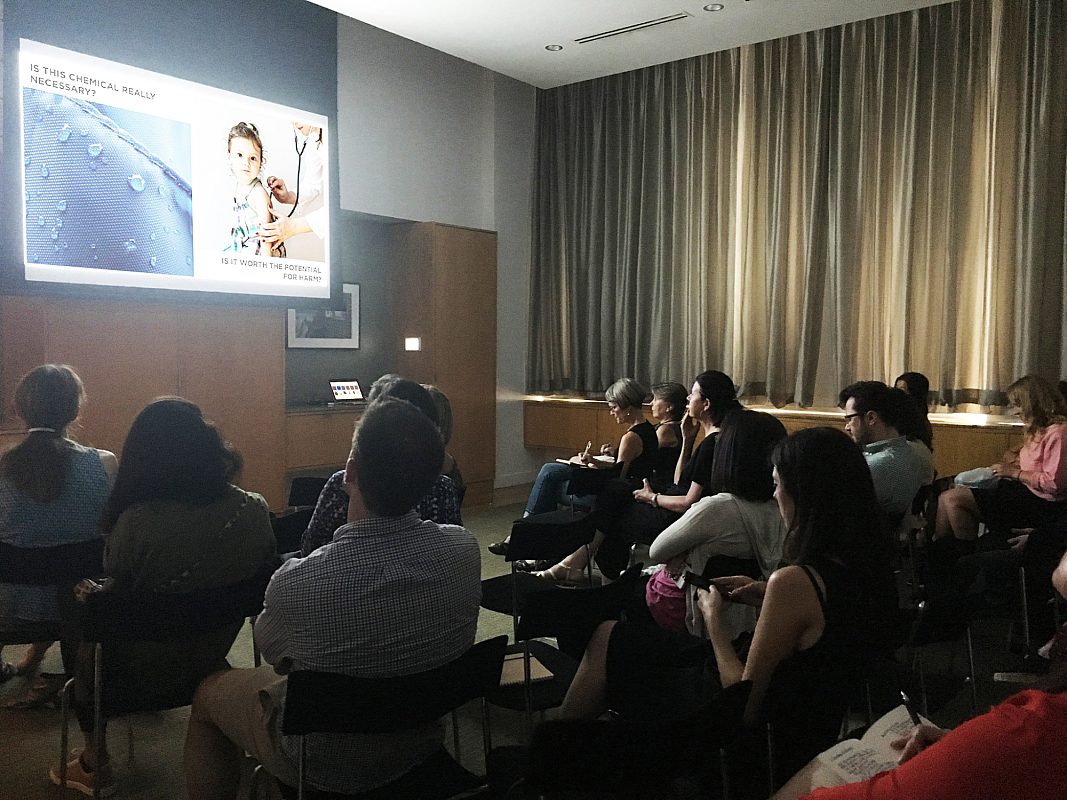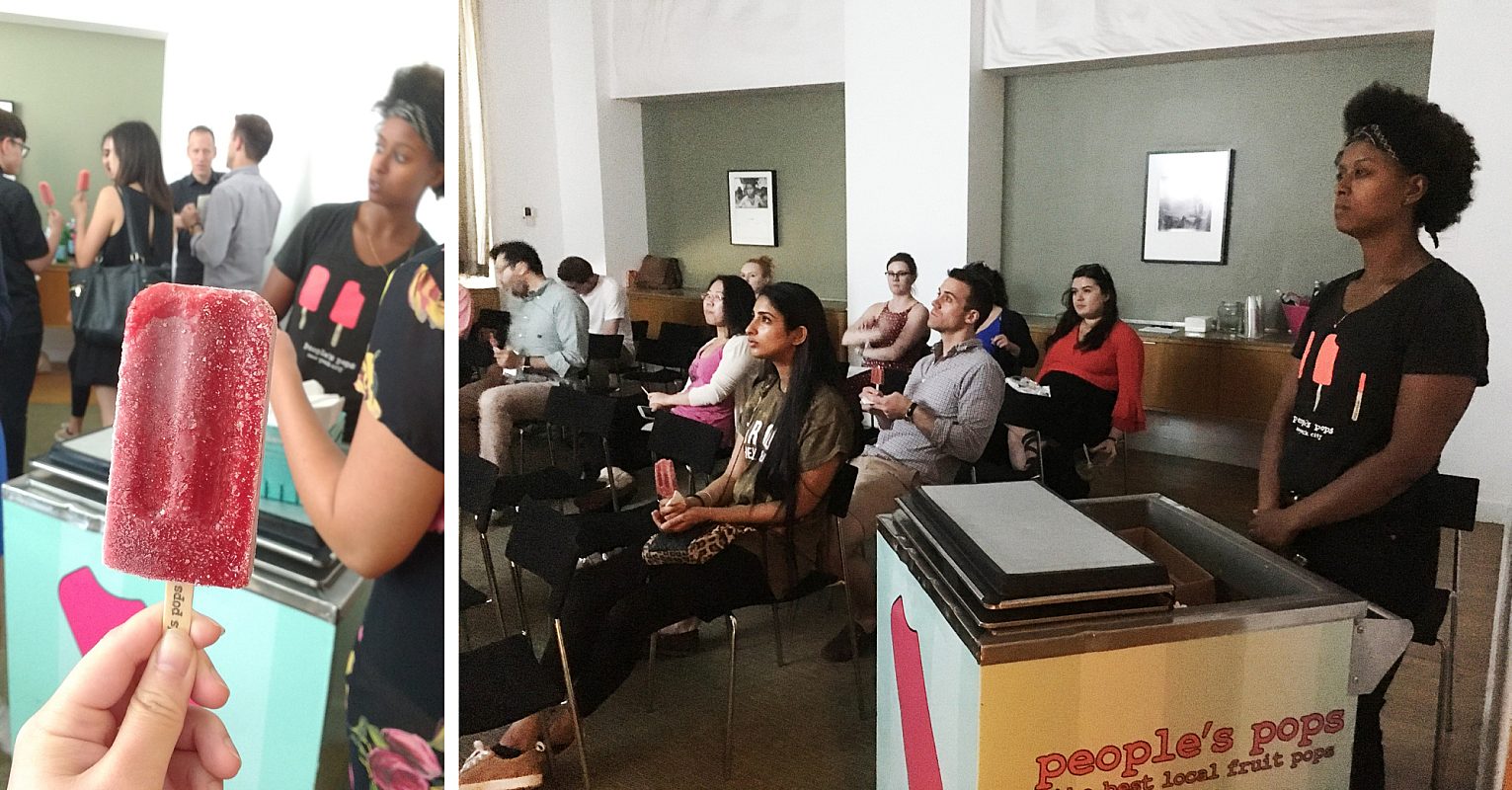BLOG
August 01, 2017
The Launch of Six Classes: Healthier Products, Healthier People
Felicity Lu-Hill
Think of your daily routine: you wash your face with antibacterial soap; you use a nonstick pan to fry up some eggs; you grab a waterproof coat on your way out because it might rain later.
The soap, the pan, the coat—these are items most people don’t think too much about. They’re all made for your convenience: the soap is antibacterial so you believe it’ll make you cleaner; the pan is nonstick so it’ll wash quicker; the coat is waterproof so it’ll dry quicker.
But what if you learned that adding convenience to these simple items—along with many other things you use everyday—means adding harmful chemicals to your health and to the environment? Would you still mind having to soak and scrub a pan for a few extra minutes? There’s a price to pay when you add a nonstick, waterproof, or stain-resistant layer to things; it’s called highly fluorinated chemicals.
What if you learned that adding convenience to these simple items—along with many other things you use everyday—means adding harmful chemicals to your health and to the environment?
Highly Fluorinated Chemicals is one of six classes of chemicals Green Science Policy has deemed toxic. In addition to Highly Fluorinated Chemicals, the Six Classes include: Antimicrobials, Flame Retardants, Bisphenols & Phthalates, Some Solvents, and Certain Metals. Understanding what goes into convenient everyday items is the primary purpose of the Green Science Policy’s Six Classes: Healthier Products, Healthier People, a video series educating people on how to avoid to toxic chemicals.
The series launched on Thursday, June 22nd 2017, with a live webinar featuring an introduction to the six classes, the first two videos in the series, as well as a panel discussion. The introductory video talked about the process of deciding on the six classes approach: how initially it seemed overwhelming to go through more than 80,000 chemicals one by one to determine which ones are toxic. Green Science Policy’s vision was to make this task more achievable by breaking down potentially hazardous chemicals into six categories. Following the introduction were the videos for antimicrobials and highly fluorinated chemicals. Highly fluorinated chemicals, which are found in non-stick, stain resistant, and waterproof items, are a known carcinogen that can raise cholesterol and cause liver malfunction. Antimicrobials, which are found in antibacterial soaps and other products (such as children’s toys), kill good bacteria and disrupt hormone levels when absorbed into the body through the skin.

The panel, lead by the Executive Director of the Green Science Policy, Arlene Blume, initiated a discussion after each video. The panel featured Jen Jackson, Toxics Reduction Manager of the San Francisco Department of the Environment, Tom McKeag, Executive Director of the UC Berkeley Center for Green Chemistry, and Marty Mulvihill, Co-Founder and Partner of Safer Made. Blume asked the expert panelists their thoughts and reactions to the videos. While Jackson gave insight on the strides San Francisco has made to eliminate the usage of toxic chemicals, McKeag and Mulvihill referred to chemistry aspects, noting that even the so-called “healthier” replacements for some chemicals are often just as toxic.
Jackson gave an environmental perspective, discussing how food packaging coated with highly fluorinated chemicals (used to create a slippery film to keep it clean and dry) often goes into compost since it’s made from paper, which then goes into soil and pollutes fresh crops. Jackson also noted how antimicrobials can impact the environment as they not only kill good bacteria on the body, but often kill good bacteria and algae in the ocean when washed down the drain. Mulvihill added a business perspective to the discussion, pointing out that if everyone demanded healthier products, the price for them would eventually go down.
If everyone demanded healthier products, the price for them would eventually go down.
The Healthy Materials Lab, who played a major role in developing the images and accessible presentation of this these videos’ information, held a party for the launch (complete with artisanal, locally-made, naturally flavored popsicles). Many who attended the launch (including professionals, faculty, alumni and students) in New York were shocked by the variety of items that contained these toxic chemicals: pans, packing material, even ski wax. One visitor claimed that when she got home she was “just going to throw away” the soaps that she kept in her linen closet. She also talked about sharing the Six Classes with people she knew, “I have to think of all the places where I can encourage people to watch it,” she said, “It is so informative.”

In terms of progress being made, the videos also listed several companies that were currently in the process of eliminating these harmful chemicals, companies such as Zara, Crate & Barrel, IKEA, and Levis. Attendees were just as surprised, but pleasantly so, on the number of companies who were cooperating to phase out these toxic chemicals. One visitor claimed she would shop at Crate & Barrel the next time she needed furniture. It wound up being an effective ad for these businesses.
The other four videos were launched with two more webinars the following Thursdays with other field experts adding to the conversation. Since their launch, the videos are now online ready to be watched, shared, and used to educate. Hopefully with this accessible tool, people will reconsider the products they buy and use everyday, and ask the question, “Is this convenience necessary?” It’s the little conveniences that can have big consequences.
Read More
Join Our Academic Network
Get Access to our carefully researched and curated academic resources, including model syllabi and webinars. An email from an academic institution or a .edu email address is required. If your academic institution does not use .edu email addresses but you would like to join the network, please contact healthymaterialslab@newschool.edu.
Already have an account? Log in
